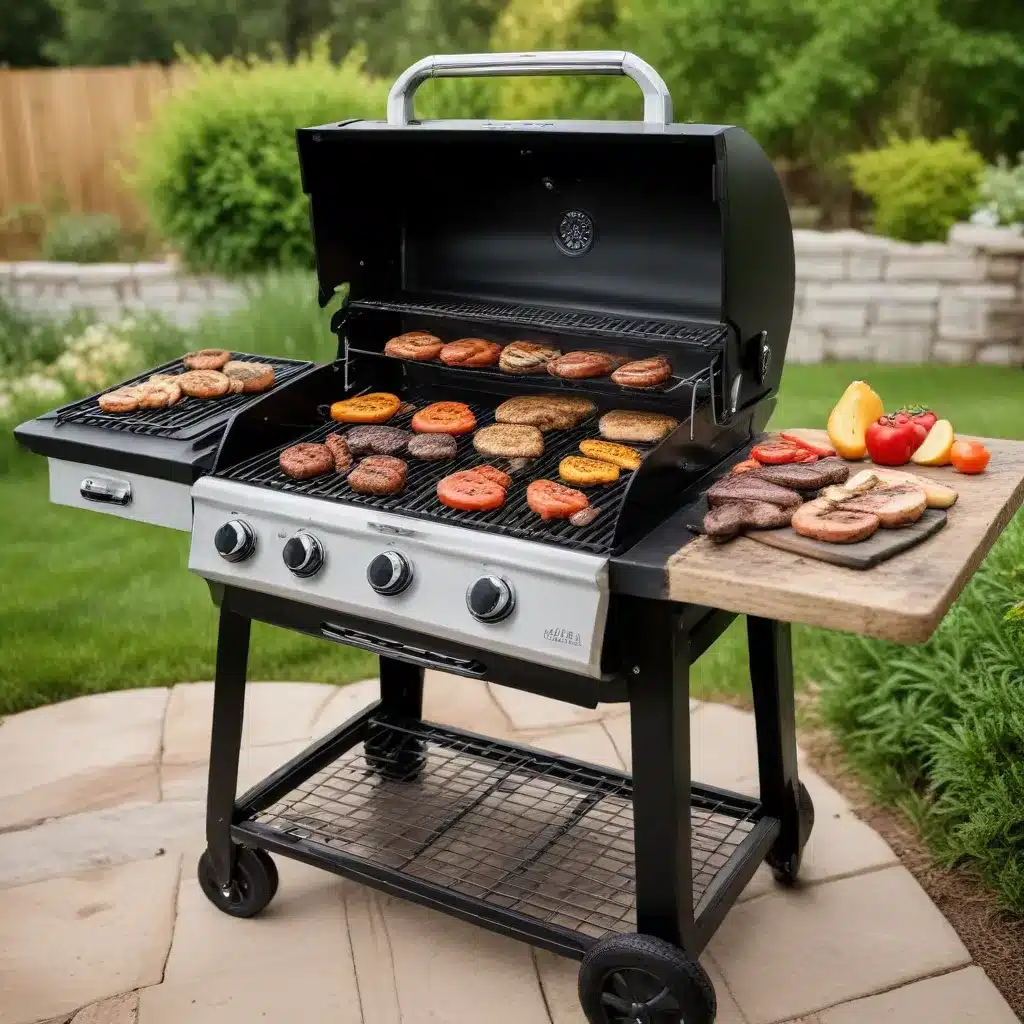
The Charcoal Allure: Capturing the Essence of Barbecue
As an experienced pitmaster, I’ve spent countless hours tending to the flames and coals that breathe life into the art of barbecue. There’s something primal and captivating about the dance of fire, smoke, and meat that has drawn me in since my early days of grilling. The aroma of burning hardwood, the sizzle of hot grates, and the satisfaction of a perfectly charred crust – these are the sensations that have made me a devoted charcoal enthusiast.
But I understand the allure of the modern gas grill as well. The convenience, the precise temperature control, and the ease of use all have their merits. As a barbecue aficionado, I’ve explored both the charcoal and gas realms, and I’m here to share my insights on the pros and cons of each, empowering you to make an informed decision for your backyard cooking adventures.
The Charcoal Advantage: Flavor and Authenticity
One of the primary advantages of a charcoal grill is the unparalleled flavor it can impart on your food. The smoke from the burning charcoal and wood chunks infuses the meat with a depth of flavor that simply can’t be replicated with a gas grill. This article from Taste of Home highlights the nuanced differences in the cooking process, noting that “the smoky flavor from charcoal is nearly impossible to replicate on a gas grill.”
But it’s not just the flavor that sets charcoal grilling apart. There’s an undeniable sense of tradition and authenticity that comes with tending to the coals, adjusting the airflow, and perfecting the dance of heat and smoke. As a pitmaster, I take great pride in the ritual of fire-building, temperature management, and the patient wait for that perfect sear. It’s a connection to the roots of barbecue that resonates with me and many other enthusiasts.
Mastering the Charcoal Grill: Tips and Techniques
Achieving the perfect balance of heat, smoke, and cook time on a charcoal grill requires a certain level of skill and experience. Over the years, I’ve honed my techniques to ensure consistently delicious results. Here are a few tips I’ve learned along the way:
Fuel Selection: The type of charcoal and wood chunks you use can make a significant difference in the flavor profile. I prefer to use a blend of high-quality lump charcoal and hardwood like oak or hickory, which imparts a robust, smoky taste.
Airflow Management: Controlling the airflow is crucial for maintaining precise temperature and smoke levels. I ensure my grill vents are fully open during the initial heating phase, then gradually adjust them to regulate the temperature as needed.
Temperature Zoning: Charcoal grills allow for versatile temperature zoning, enabling you to sear over direct heat while slower-cooking items over indirect heat. This flexibility is invaluable for achieving the perfect doneness across a variety of cuts and dishes.
Patience and Persistence: Mastering the charcoal grill takes time and practice. I’ve learned to embrace the slow, methodical process, allowing the flavors to develop and the meat to reach its ideal texture. It’s a labor of love, but the results are well worth the effort.
The Gas Grill’s Convenience and Precision
While I’m a devoted charcoal enthusiast, I recognize the appeal of gas grills, particularly for those seeking a more streamlined and convenient grilling experience. The instant ignition, precise temperature control, and easy cleanup are undeniable advantages that gas grills offer.
As discussed on Reddit, gas grills excel at providing consistent, reliable heat, making them well-suited for quick-cooking items like burgers, hot dogs, and delicate seafood. The ability to precisely adjust the temperature and maintain a steady flame can be invaluable for achieving the perfect sear or gentle cooking.
Additionally, the ease of use and low-maintenance nature of gas grills can be a significant draw for those with busy lifestyles or limited time for extensive preparation. The convenience of simply turning a knob and letting the grill do the work can be a game-changer for those who prioritize efficiency over the ceremonial aspects of charcoal grilling.
Striking a Balance: Exploring Hybrid Grilling
In recent years, I’ve observed an interesting trend emerging in the grilling world – the rise of hybrid grills that combine the best of both charcoal and gas. These innovative designs allow you to enjoy the authentic flavor of charcoal while benefiting from the convenience and temperature control of gas.
As explored on Quora, these hybrid grills can provide the best of both worlds, enabling you to sear over direct charcoal heat while also leveraging the precision of gas burners for more delicate cooking tasks. This versatility can be a game-changer for the discerning backyard chef, allowing them to experiment with different techniques and flavor profiles.
Crafting the Perfect Backyard Masterpiece
Ultimately, the choice between a charcoal or gas grill comes down to personal preference, cooking style, and the type of dishes you want to prepare. As an experienced pitmaster, I’ve found that both have their merits and can be valuable assets in the pursuit of backyard culinary excellence.
Whether you’re a die-hard charcoal enthusiast or a gas grill devotee, the key is to embrace the unique advantages of each and find the approach that best suits your needs and preferences. Experiment, explore, and never be afraid to try new techniques and equipment – the world of barbecue is vast, and the possibilities are endless.
At Creekside BBQ, we’re passionate about sharing our expertise and inspiring fellow barbecue enthusiasts to elevate their backyard cooking experience. From perfecting the art of low-and-slow smoking to mastering the nuances of direct-heat grilling, we’re here to help you unlock the secrets of exceptional barbecue, no matter which type of grill you call home.
So, fellow pitmasters, let’s embark on this flavorful journey together, where the sizzle of hot coals and the dance of smoke and fire ignite our senses and fuel our culinary passion. The possibilities are endless, and the rewards are oh-so-delicious.

